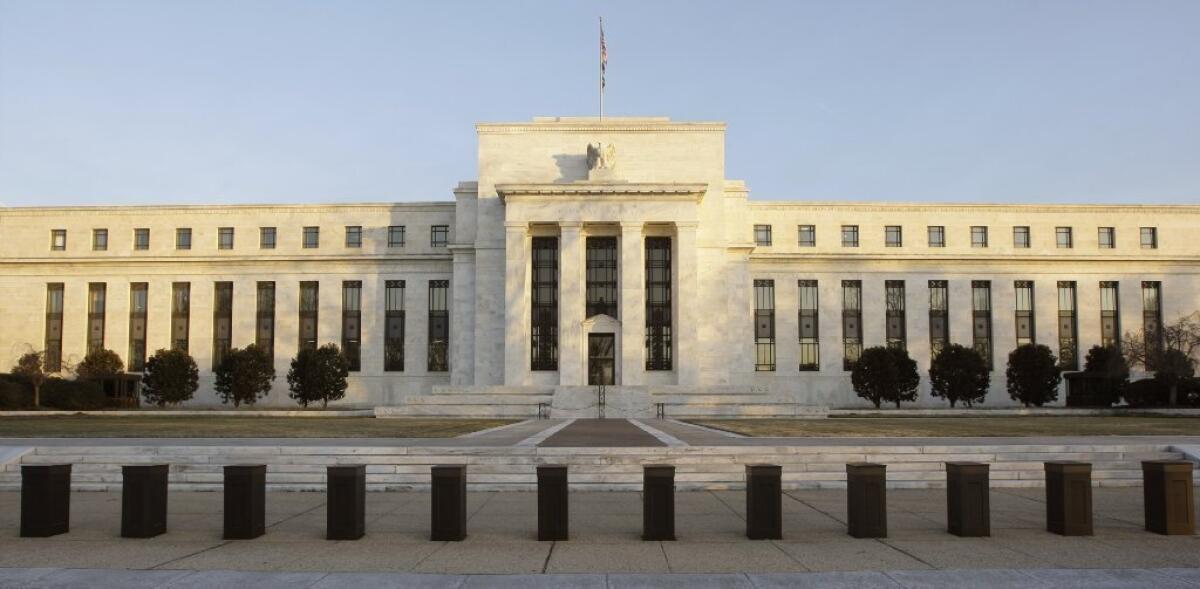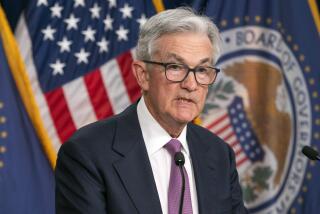Fed says moderate growth has returned, will stay course on stimulus

WASHINGTON -- Federal Reserve officials Wednesday acknowledged the recent pick-up in economic growth, noting in particular âlabor market conditions have shown signs of improvement,â but the central bank made no change in its ongoing aggressive stimulus programs.
Fed policymakers, after their two-day meeting, voted 11 to 1 to keep buying $85 billion of Treasury and mortgage securities every month.
And as expected, they left the short-term interest rate at near zero, where it has been since late 2008. Fed policymakers repeated they would keep the interest rate at that level as long as the jobless rate is above 6.5% and the inflation outlook remains close to its target rate of 2%.
Most Fed officials donât see the unemployment rate, currently 7.7%, reaching 6.5% until 2015.
Despite the recent improvement in the economy, the Fedâs updated economic outlook actually forecast growth this year to come in slightly less than the central bankâs previous projections in December.
That is presumably because of the federal spending cuts that kicked in March 1 under sequestration, something the Fed pointed to in its statement Wednesday, saying âfiscal policy has become somewhat more restrictive.â
The Fed reduced its forecast for economic growth this year, saying the economy would expand at no greater than 2.8%, down from a projected maximum of 3% made in December.
At the same time, the Fed lowered its projection for the unemployment rate, saying it would range from 7.3% to 7.5% by the fourth quarter. The forecast in December was 7.4% to 7.7%.
The latest statement from the Fed, coming after a two-day policy meeting, has been eagerly anticipated as the economic recovery has accelerated in recent weeks.
Job growth in February exceeded analyst expectations. The economy added 236,000 net new jobs that month and the unemployment rate fell to 7.7%, the lowest level since the end of 2008.
Since 2008, the Fed has been engaged in unprecedented attempts to stimulate the economy by keeping short-term interest rates near zero and dramatically expanding its balance sheet.
The central bankâs latest, and most ambitious, effort began in the fall as the Fed began purchasing $85 billion in bonds a month to hold down long-term interest rates in hopes of increasing spending by businesses.
The program, known as quantitative easing, is open ended.
The government reported last week that consumer prices jumped 0.7% in February, the biggest increase since 2009. The rise, caused by a spike in gasoline prices, brought inflation over the previous 12 months to 2%, the Fedâs target for an acceptable rate.
The Fed said Thursday that inflation still was running âsomewhat belowâ its longer-term objective, although it did not that there have been âtemporary variations that largely reflect fluctuations in energy prices.â
ALSO:
Hiring picks up as housing market recovers
U.S. economy improving faster than expected, data show
California unemployment rate holds at 9.8%, highest in U.S.
More to Read
Inside the business of entertainment
The Wide Shot brings you news, analysis and insights on everything from streaming wars to production â and what it all means for the future.
You may occasionally receive promotional content from the Los Angeles Times.












